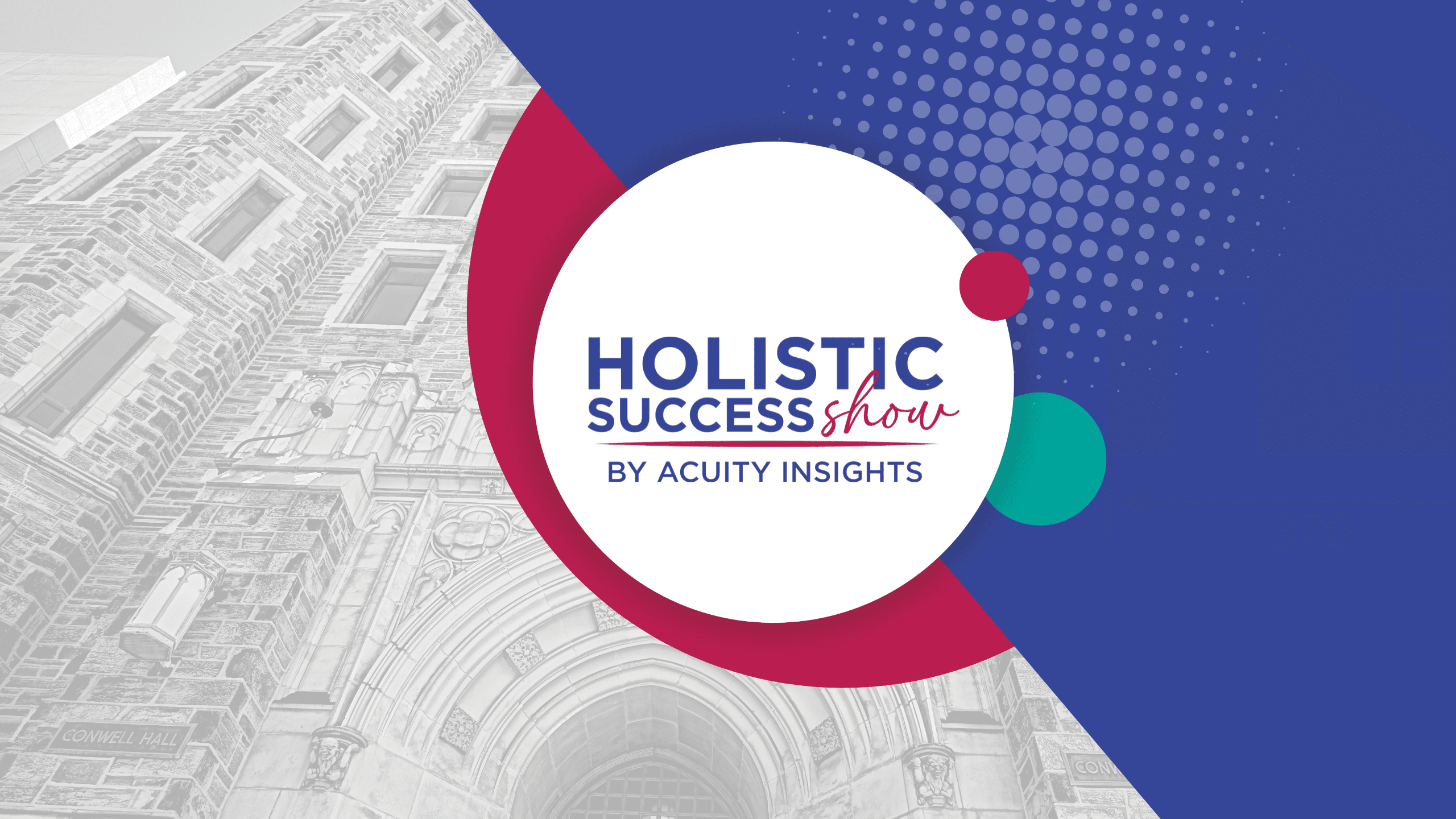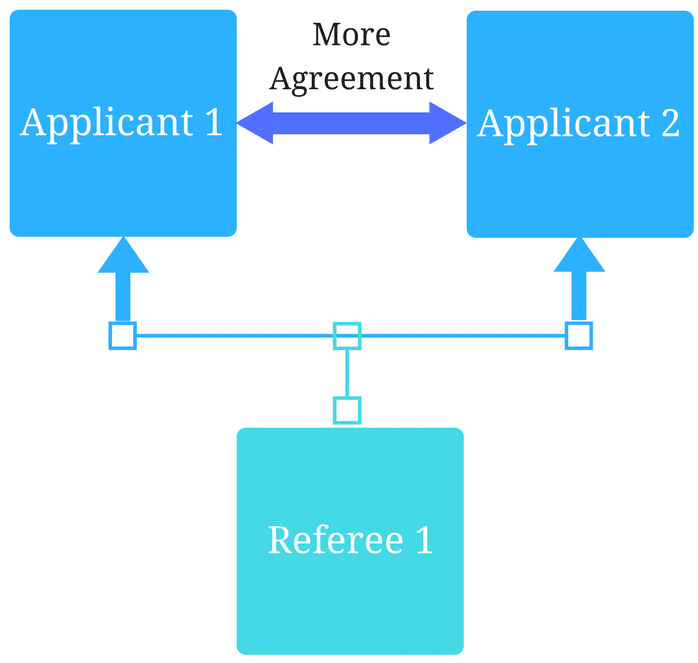Holistic Student Potential: A Future-Oriented Approach to Higher Education

September 28, 2023
In the realm of higher education, one often-contemplated topic is the efficiency and fairness of applicant evaluation methods. How often have we heard stories of applicants spending countless hours crafting the perfect personal statement, only to wonder if their efforts truly mattered? In the ever changing landscape of university admissions, it’s time that colleges and universities reconsider their approach to student admissions and look beyond the traditional markers like grades and test scores.
These are the types of topics and insights that Acuity Insights will be diving into in our new Holistic Success Show.
What’s the Holistic Success Show all about?
Episodes will feature expert discussions, insightful interviews, and actionable advice on a wide range of topics. From identifying top-tier candidates to widening pathways in admissions, from optimizing program efficiency to harnessing the potential of data analytics — we cover it all. By listening to the Holistic Success Show, you’ll gain invaluable insights and practical solutions that you can implement immediately in your role.
In this first blog post we’ll be covering the topic of holistic student potential featured in our first ever episode of the Holistic Success Show, where Dr. Kelly Dore, co-founder of Acuity Insights, co-creator of Casper, and VP, of Science and Innovation at Acuity Insights chats with our Senior Director, Marketing Anju Visen-Singh about what holistic student potential in higher education really looks like.
Why is holistic admissions an important concept in higher education?
Traditionally, universities have used academic metrics as the main tools for student evaluation. GPA scores, standardized tests, and other academic benchmarks have been the gatekeepers of higher education institutions, establishing an aura of prestige. But in doing so, have we unintentionally created barriers for potential students who might not fit this mold? Setting artificially high academic markers may dissuade potential applicants from even applying, especially if they believe their strengths lie outside of sheer academic prowess. This is particularly troubling given that success in the real world often requires more than just academic intelligence.
In an attempt to provide a fairer admissions process, there’s been a shift towards a comprehensive view of each candidate. Think of it as enhancing the resolution of a picture: by adding more pixels, or in this case, more information, we gain a fuller, clearer view of the applicant. Holistic admissions might seem resource-intensive, but it’s essentially about understanding every facet of an applicant, from academic achievements to life experiences and personal qualities, ensuring alignment with the program’s mission and gauging their potential for success.
For instance, consider a student with average grades but exceptional communication skills, determination, and life experiences that have taught them resilience. Such a student, while maybe not at the top of their class academically, could be poised for significant success in higher education and beyond due to their grit and ability to collaborate. As Dr. Dore aptly points out, sometimes those who’ve never faced academic challenges crumble when they encounter their first hurdle in higher education.
What are some ways that higher education institutions can implement a more holistic admissions process?
Schools can incorporate holistic admissions by employing a variety of non-cognitive requirements, but one way is by incorporating situational judgment tests (SJTs) that evaluate soft skills. Unlike traditional academic tests, which can have higher group differences, SJTs offer a way to measure soft skills or personal attributes in ways that are more fair and safe for test takers, offering a broader view of applicants than what would be available from academic tests alone. A benefit of using SJTs is their efficiency; they come as easily integrated data points without needing individual review, which addresses the resource constraints often associated with holistic admissions. Additionally, using an SJT is time-saving for both the applicant and the program. Even for schools facing enrollment declines, such holistic measures can increase opportunities by attracting a wide range of students who might not have previously considered themselves eligible for higher education or a specific course.
Dr. Dore co-created the most widely used open-response SJT in higher education. Casper is a unique open-response SJT used to evaluate an applicant’s social intelligence and professionalism. It offers real-life dilemmas and seeks to understand not just the applicant’s actions but their underlying motivations. Rooted in nearly 20 years of research, it was first developed at McMaster University in Canada.
What are the benefits of implementing holistic admissions?
Higher education’s mission transcends just imparting knowledge. It’s about shaping individuals who can positively impact the world around them. Universities should aim to cultivate communities where various perspectives thrive and students are prepared to tackle the complex challenges of our rapidly changing world. This vision aligns well with a holistic approach to student assessment.
A holistic assessment of student potential gives universities the chance to align their student admissions more closely with their mission. If the goal is to nurture individuals who can solve multifaceted problems, collaborate effectively across disciplines, and understand varied perspectives, then looking beyond grades becomes essential. The world doesn’t require mere fact regurgitators. Instead, it needs thinkers, innovators, and resilient individuals who can adapt to an ever-evolving landscape.
Additionally, a holistic approach could be the key to addressing enrollment declines that some institutions face. As Dr. Dore suggests, broadening admission criteria can open doors for many students, potentially boosting application rates. After all, universities should be bastions of opportunity and access, not fortresses that maintain status quo.
Stay in touch
Watch the full episode on holistic student potential now! Follow our YouTube channel to get the latest episodes of the Holistic Success Show and stay tuned to our blog for new weekly blog posts every Thursday.
Related Articles

How interviews could be misleading your admissions...
Most schools consider the interview an important portion of their admissions process, hence a considerable…
Reference letters in academic admissions: useful o...
Because of the lack of innovation, there are often few opportunities to examine current legacy…
